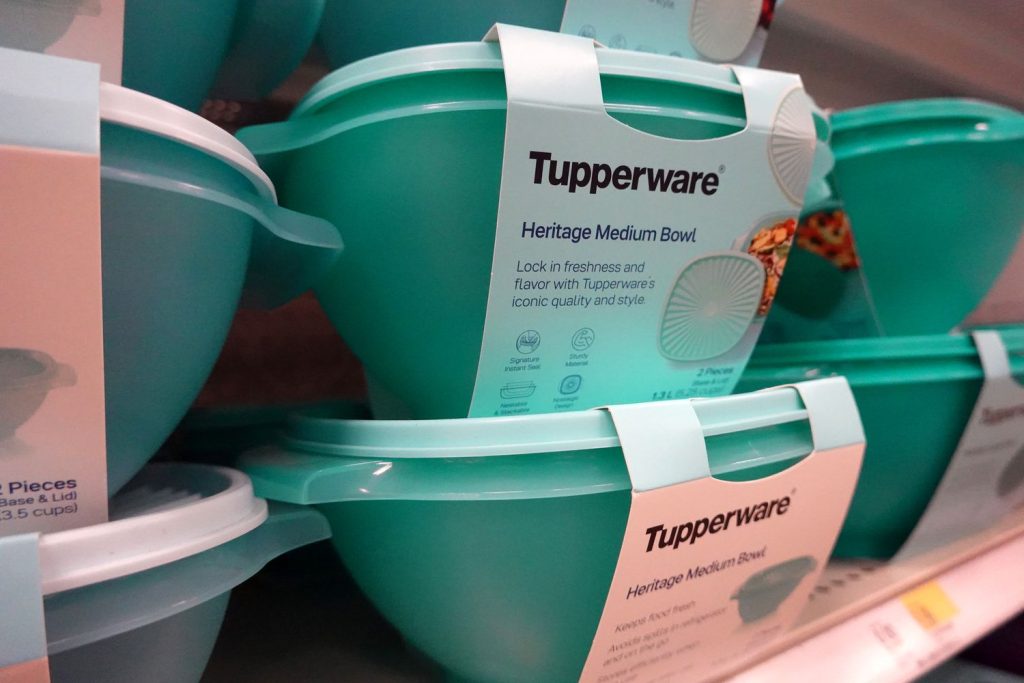Tupperware Struggles for Survival Following Bankruptcy Filing
3 min read

Tupperware, the iconic American brand known for its food storage containers, has officially filed for bankruptcy as it grapples with declining sales and an increasingly challenging market. The company has indicated that it will seek court approval to initiate a sale of its business while aiming to continue operations during this difficult transition.
Founded in 1946 by Earl Tupper, Tupperware became synonymous with food storage, with its name often used generically to describe any plastic container. Despite its storied legacy, the company has struggled to adapt to changing consumer preferences and a competitive landscape. In recent years, Tupperware attempted to revitalize its product line and appeal to a younger demographic, but these efforts have not succeeded in distinguishing the brand from its rivals.
Last year, Tupperware issued warnings about potential bankruptcy unless it could rapidly secure new funding. This week, the company saw its shares plummet by more than 50% following reports of its impending bankruptcy filing. The decline in stock value reflects investors’ growing concerns about the company’s viability.
Although Tupperware experienced a brief uptick in sales during the COVID-19 pandemic—when many consumers turned to home cooking—the demand has since waned. This downturn has been exacerbated by rising costs for raw materials, increased wages, and higher transportation expenses, all of which have significantly impacted the company’s profit margins.
Laurie Ann Goldman, Tupperware’s CEO, acknowledged the challenges facing the company, stating, “Over the last several years, the company’s financial position has been severely impacted by the challenging macroeconomic environment.” The difficult economic landscape has made it increasingly hard for Tupperware to maintain its foothold in the market.
Tupperware’s initial success stemmed from its innovative use of plastics to create airtight containers that helped keep food fresh—a crucial feature at a time when many families could not afford refrigerators. However, the brand’s breakthrough moment came through the innovative marketing strategy developed by saleswoman Brownie Wise. She introduced the concept of “Tupperware parties,” where mostly female sales representatives showcased products in a home setting, creating an engaging and social shopping experience that became a cultural phenomenon.
Today, Tupperware is sold in 70 countries around the globe, but its future is uncertain. The company faces stiff competition from both established brands and new entrants in the food storage market. Many consumers now have a plethora of options to choose from, making it harder for Tupperware to regain its former market dominance.
In response to its current predicament, Tupperware has stated its intention to reorganize its operations and explore strategic alternatives to ensure its survival. The bankruptcy filing will allow the company to restructure its debts and possibly attract new investments. However, whether Tupperware can successfully navigate this challenging phase remains to be seen.
As Tupperware embarks on this new chapter, it faces not only financial hurdles but also the need to reinvent its brand image to resonate with modern consumers. The company has a rich history and legacy, but it must evolve to remain relevant in a rapidly changing marketplace.
In conclusion, Tupperware’s filing for bankruptcy marks a significant moment for a brand that has been a household name for over 75 years. As it seeks to rebound from this crisis, the company’s ability to adapt and innovate will be crucial for its long-term survival in the competitive food storage industry.
WhatsApp us